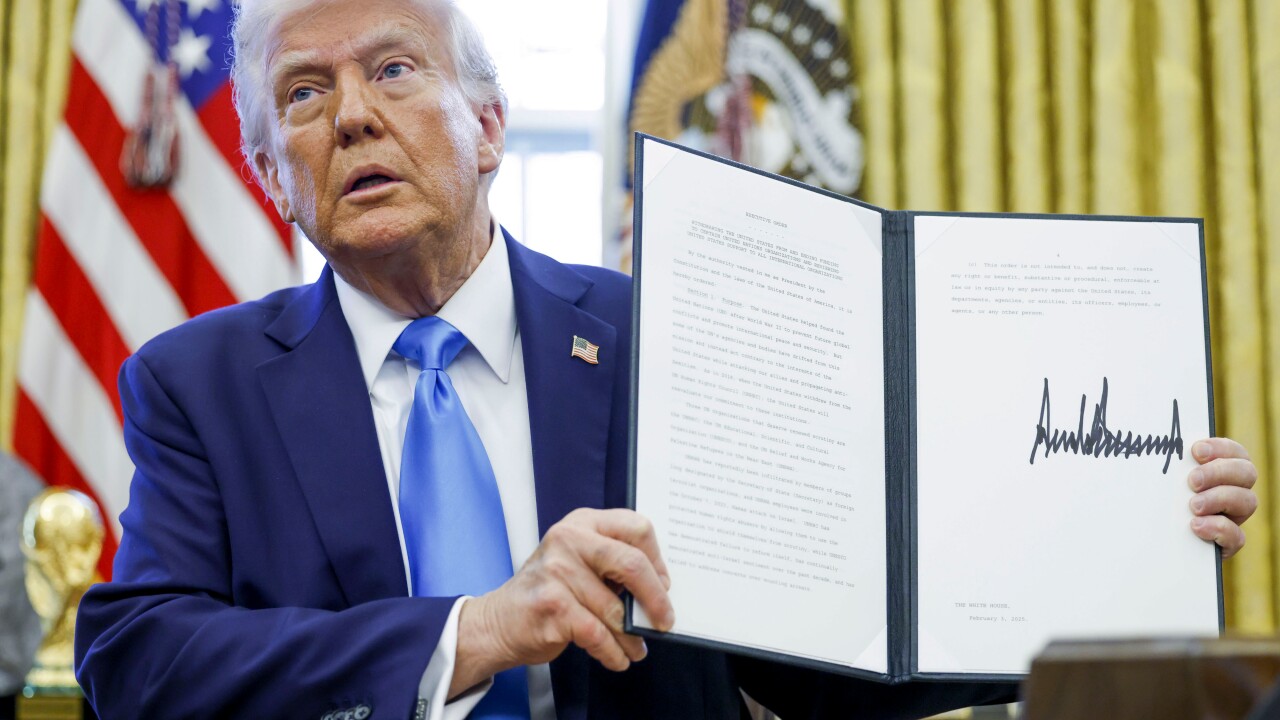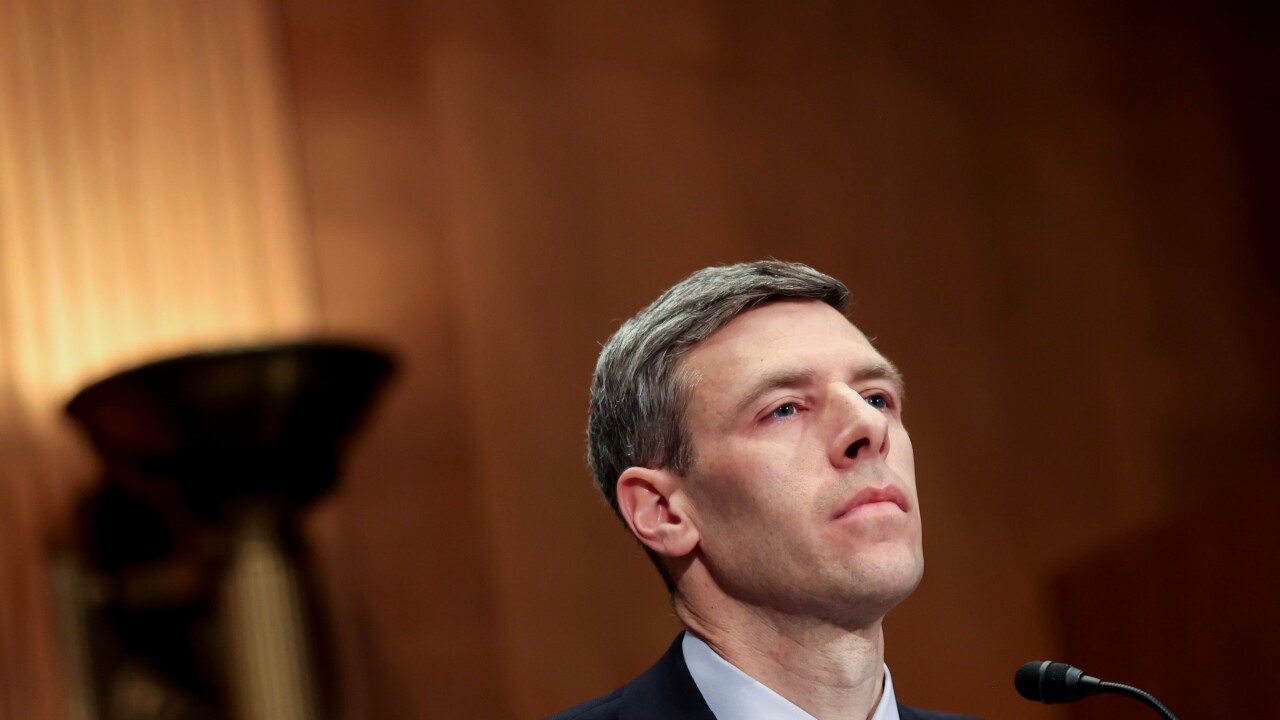WASHINGTON An innovative idea to let banks own stakes of the deposit insurance funds is catching on with bankers and regulators.
But though many have started to embrace the concept, several competing ways to carry out the plan have surfaced.
In one corner, there is the Federal Deposit Insurance Corp.s original proposal, released in an 84-page options paper last August that proposed reforms of the entire system. The agencys plan would require each bank and thrift to pay a fixed percentage of insured deposits into the reserve fund. The fixed amount would equal the institutions ownership stake in the fund.
An alternative was proposed recently by the Office of the Comptroller of the Currencys chief economist, James A. Wilcox. His plan would also let banks and thrifts own stakes in the fund but would run the system more as a private mutual insurance company.
Meanwhile, the banking industry is busy crafting its own wrinkles. Officials at the American Bankers Association said the groups government relations council is leaning toward a version that would give banks credit for past payments into the fund.
Most parties agree that the current system which enables almost 93% of banks to pay nothing in good times but steep fees in tougher times needs an overhaul.
If the ratio of federal reserves to insured deposits drops below the statutory minimum of 1.25% and if the fund is not recapitalized within a year, every bank would be charged 23 cents for every $100 of insured deposits. The FDIC has said this would cost banks almost $9 billion and would cause a $65 billion reduction in lending.
Regulators and industry representatives are also worried about large institutions, such as Merrill Lynch & Co., that can move billions of dollars quickly from uninsured accounts into insured accounts without paying premiums. Analysts fear that enough money could be moved to dilute the reserve ratio below the statutory minimum and trigger industrywide premiums for the first time in four years.
The mutual model, which would try to address both problems, has drawn the industrys interest.
It is a very attractive model, said James Chessen, chief economist for the ABA. The first reason is that banks are mutually responsible for losses and mutually benefit from any positives. In the current situation, we are already responsible for losses. We have the downside already but dont fully enjoy much upside. We dont get a return, or a rebate on the excess of the funding of the FDIC.
The FDICs original proposal mirrors the current credit union model, in which institutions put 1% of their deposits into a fund but can still count the money as theirs. Banks would pay a set percentage of their deposits in one lump sum. If the deposits did not change in the next year, the bank would pay no more. If they rose, the bank would have to pay more to adjust for the increase. If they fell, the institution could get a refund, an idea many bankers find appealing.
But the plan is still in its early stages and leaves many unanswered questions. How would risk-based premiums be determined? What would happen to the current reserve ratio? The most important question for many bankers is: How would payments made before 1996 be included in any mutual model?
The FDIC said it expects to give more details early next year.
Mr. Wilcox of the OCC said that, rather than emulating the credit union model, his approach is designed to imitate the private sector. Like the FDIC proposal, his plan would give each bank and thrift an ownership claim on the fund, and the institutions would receive refunds if the deposit base shrank. They would also face an extra dilution fee on any deposit growth, he said.
But instead of replacing the current reserve ratio, Mr. Wilcoxs plan would let the FDIC change it periodically as agency officials determine how much risk the system faces. Banks would be assessed risk-based premiums every year.
Unlike the current system, however, banks would be entitled to a refund if the reserve funds exceeded the reserve ratio. The industry would also be liable if the funds fell short.
But Mr. Wilcoxs plan does not determine how the industrys past contributions would factor in to the new system. At least one analyst said this issue must be addressed.
There are differences between the FDIC model and Mr. Wilcoxs, but those differences are swamped by some fundamental flaws common to both, said Bert Ely, an independent consultant in Alexandria, Va.
One major flaw is the apparent unwillingness of the agencies to give the banking industry full credit for their past contributions, he said. There was a lot of money paid into those funds in the 1990s, and the industry will not just walk away from that.
The ABAs Mr. Chessen said many bankers are interested in the mutual model and are suggesting a way that past contributions could be included. Under this scenario, each bank and thrift would pay a risk-based premium based on deposits, but the institutions would get a dividend based on how long and how much they had contributed to the funds.
Many banks could end up paying exactly what they pay now nothing, he said.
Though banks may owe deposit insurance premiums, their dividends could compensate fully for any payment, Mr. Chessen said. The only ones who would pay more would be start-ups or fast-growing institutions whose risk-based premiums would presumably rise, he said.
There is traction to the equity model, particularly getting rebates based on past contributions, Mr. Chessen said. This is an idea that could have traction on Capitol Hill. 





